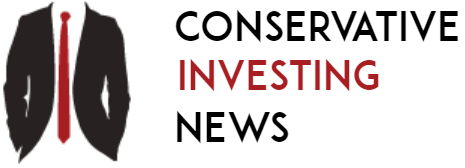These four income-generating ETFs will attract more investors as interest rates decline.
Over the past two years, many high-yield dividend stocks sank as interest rates rose. With risk-free CDs, Treasury bills, and high-yield savings accounts paying yields around 5%, dividend-paying stocks and exchange-traded funds (ETFs) lost their luster.
But in September, the U.S. Federal Reserve cut its benchmark rate for the first time in four years. It’s also expected to execute more rate cuts in the future as inflation cools off. The 10-year Treasury yield has already declined to about 4% as of this writing, and it will likely drop even further over the next few quarters.
To capitalize on this trend, investors should buy high-yield dividend stocks and ETFs again. So today, let’s review two covered-call ETFs and two municipal-bond ETFs that you can consider adding to your portfolio to generate more passive income.
Image source: Getty Images.
Buy these two covered-call ETFs
Many high-yield ETFs sell covered calls to boost their yields. A covered call is a call option written on a stock you already own. When you sell the call, you earn a premium, while the buyer gets the option of buying your stock at the strike price on the expiration date.
If the stock doesn’t reach the strike price by that date, you’ll keep the premium and your stock. But if the stock exceeds the strike price, you’ll need to sell it to the call holder, unless you buy back the option at a loss.
ETFs that use this strategy continuously write covered calls on the stocks they own and use the premiums to boost their yields. If the underlying stocks are called away, they’ll buy them back at higher prices to write more covered calls.
This strategy works well in a bearish or stagnant market, since the covered calls will consistently expire, and the fund won’t need to keep buying back the underlying securities. But in a bull market, covered-call ETFs tend to underperform the major indexes because the strike prices will constantly limit the upside potential of the underlying securities.
Continuously writing covered calls also isn’t a tax-effective strategy because the seller books the premiums as capital gains with each options expiration. To simplify that process and reduce those taxes, some ETFs will trade equity-linked notes (ELNs), which are tethered to covered calls instead of directly writing and selling the options.
If that conservative income-generating strategy sounds appealing, you should buy these two high-yield ETFs: JPMorgan Equity Premium Income ETF (JEPI -0.27%) and JPMorgan Nasdaq Equity Premium Income ETF (JEPQ 0.27%). Both ETFs use ELNs tethered to covered calls while charging low expense ratios of 0.35%.
Source: YCharts
The JPMorgan Equity Premium Income ETF holds a diverse portfolio of 134 stocks and writes monthly calls on the S&P 500. The JPMorgan Nasdaq Equity Premium Income ETF holds 98 stocks and writes monthly calls on the Nasdaq-100.
Both ETFs pay monthly dividends, which come from a combination of the dividends generated by their underlying securities and the covered calls. The Premium Income ETF pays a 30-day SEC yield of 8%, while the Nasdaq Equity Premium version pays a yield of 12.4%. The Nasdaq version pays a higher yield because its covered calls are pinned to more volatile (and thus higher-yielding) stocks. But as of this writing, they’re also both trading at or near their net asset value (NAV) prices.
Buy these two municipal-bond ETFs
Municipal bonds are another great option for generating passive income for two reasons. First, their dividends can’t be taxed on the federal level. They also can’t be taxed on the state level if you live in the state that issued the bonds. So for residents of states without any income tax, all that income will be exempt from taxes.
Second, municipal bonds are generally a lot safer than corporate bonds. But buying individual municipal bonds can often be a complicated, confusing process. To address those challenges, many asset managers bundle together large baskets of municipal bonds in ETFs. Two of those popular funds are the VanEck High Yield Muni ETF (HYD 0.25%) and the BlackRock High Yield Muni Income Active ETF (HYMU 0.31%).
Source: YCharts
VanEck’s ETF holds 1,472 municipal bonds, charges a low expense ratio of 0.32%, and has a 30-day SEC yield of 4.2%. BlackRock’s ETF holds a smaller basket of 321 municipal bonds and charges a slightly higher expense ratio of 0.35%, but it has a higher 30-day SEC yield of 4.3%. Both ETFs are trading near their NAV prices.
With a tax-free yield of more than 4%, these low-risk municipal bond ETFs will become even more appealing as interest rates decline. They won’t outperform the market or impress more aggressive income investors, but they can be great options for retirees who simply want to passively generate some tax-free income with minimal volatility.
Leo Sun has positions in JPMorgan Equity Premium Income ETF and JPMorgan Nasdaq Equity Premium Income ETF. The Motley Fool has no position in any of the stocks mentioned. The Motley Fool has a disclosure policy.
